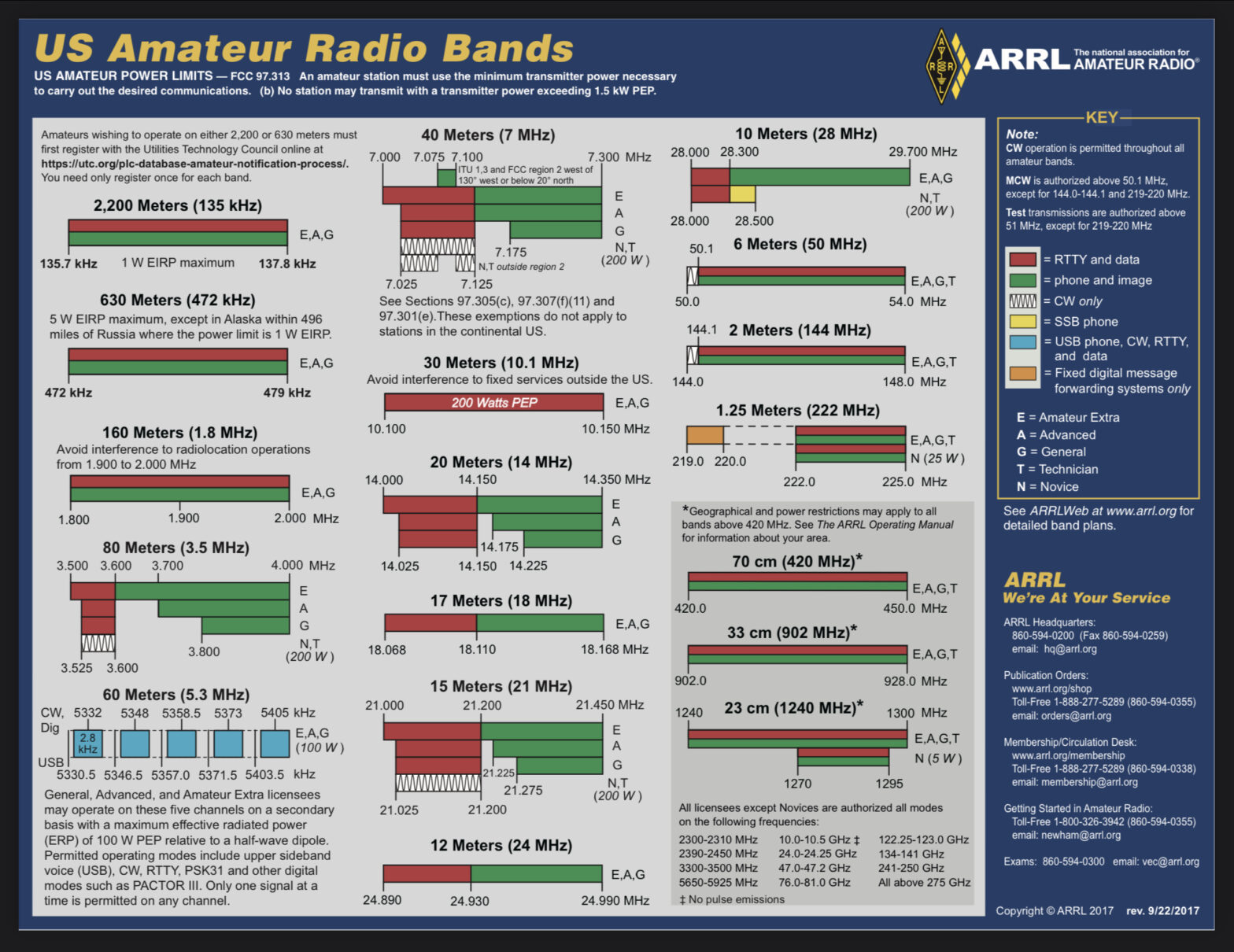Y’all have seen the ARRL Band Chart. It’s ubiquitous. Think of nearly any Ham Radio YouTuber, and in your mind’s eye you can picture where they have it printed & posted on their wall. I have one laminated & sticking slightly out of a drawer so I can grab it anytime. I refer to it frequently.
Get it? …frequently?
Hah!
Anyway… that thing is as vaguely & moderately useful as the ARRL itself; i.e. only so much.
If the ARRL wanted to be truly helpful, they could & should make a web-driven, interactive band chart that is aware of the most common frequencies used by psk, vara (et al) packet, olivia, etc. And aware of the much more static frequencies for modes that never (or almost never) move. Modes like FT8, FT4, WSPR, JS8, FreeData, etc.

The traditional advice of “Listen, listen, listen some more, then ask ‘Is the frequency in use?’” is good advice, but outdated. It applied well when the use of the ham radio HF bands was mostly CW & SSB (and a little AM). There are so many more digital modes out there now. Someone could ask “Is this frequency in use?” using RTTY45, but unless the people very much using that frequency at that very moment are not only also on RTTY, but on RTTY45 specifically, AND perfectly tuned to the same freq, they can’t “hear” the question and respond appropriately.
There’s a RTTY contest going on. It always wreaks havoc on bands that are indeed already very much in use. The contesters probably mostly don’t want to be trouncing around upon weak signal modes they can’t hear or see, but do they have a good reference for all the things that are likely going on all day every day? Does the contest’s web page of rules/guidelines point to a tool that points out frequencies they might not want to stomp upon?
Does the built-in band-map of their contesting logger show where other modes are likely already busy? I’ve used N1MM in a contest before, and it could be configured to throw up warnings and/or prohibit TX if out-of-band. Why does it not do the same to discourage trouncing on other modes which tend to be in regular use 24×7?
On the one hand, we should not need a nanny to guide our every move. On the other hand, they don’t know what they’re not told, and they can’t see (or hear) what doesn’t appear brightly on their noise-cancelled waterfall. So if a particular contest operator wants to not be the bull in the china closet, is there an adequately convenient and thorough tool available for them?
I wonder.
